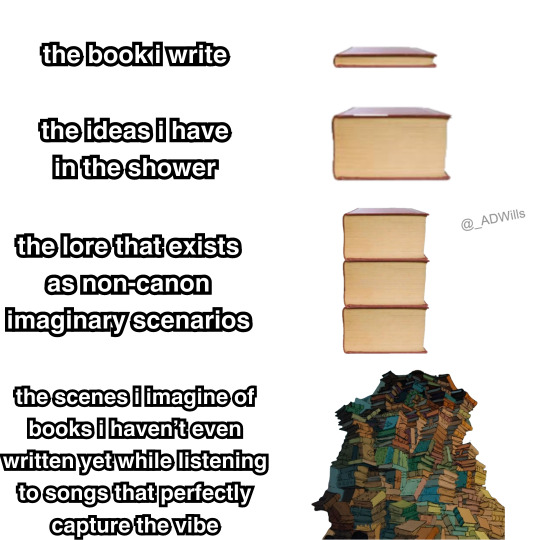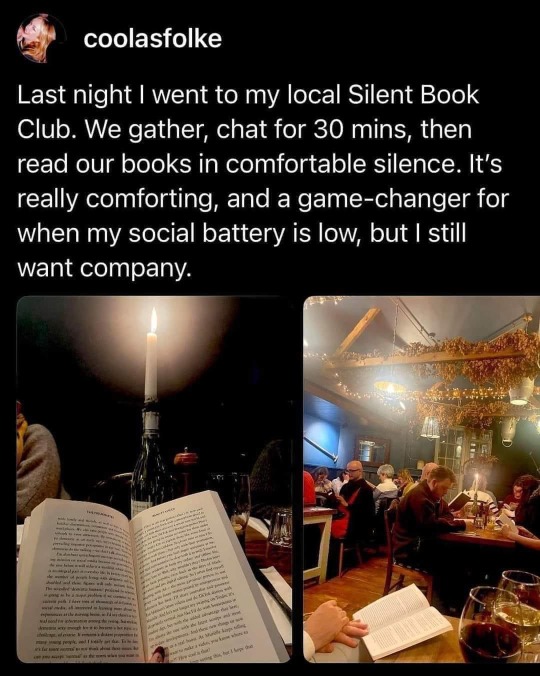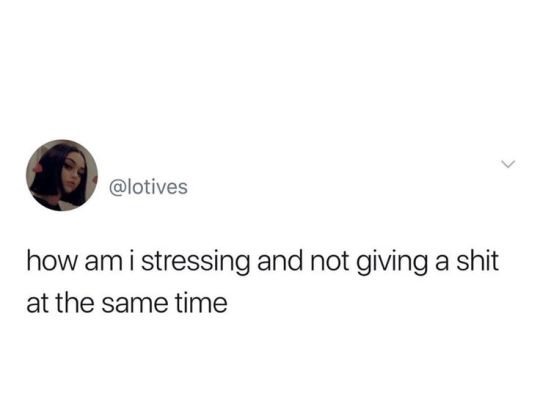Text
I use a Lenovo thinkpad and have a pen for it. I also want to get into digital art. So does anyone know of some good drawing/art apps that I can use for thinkpad??? TIA!!!
0 notes
Text
So... I found this and now it keeps coming to mind. You hear about "life-changing writing advice" all the time and usually its really not—but honestly this is it man.
I'm going to try it.

66K notes
·
View notes
Text
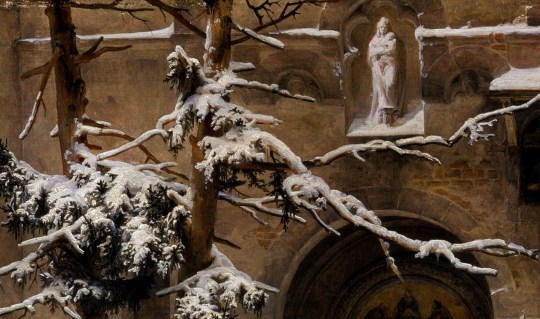
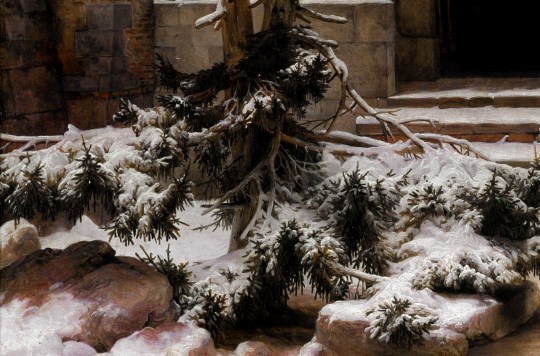
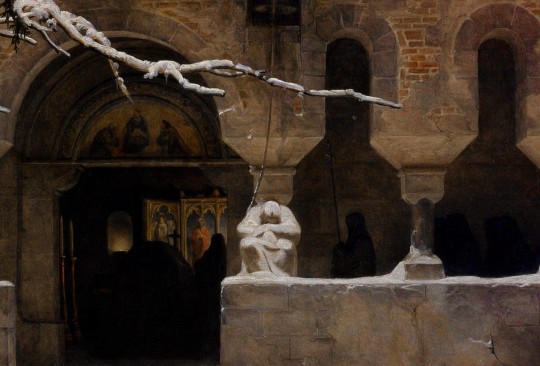
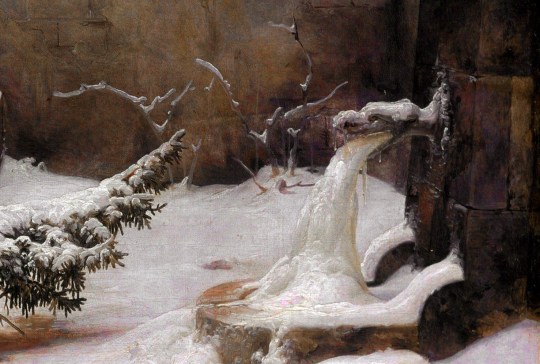

Monastery Garden in Snow, c.1829 - oil on canvas
― Karl Friedrich Lessing (German, 1808-1880)
12K notes
·
View notes
Text
*trembling, vibrating, clawing at the ground and foaming at the mouth, crawling and dragging my weak body across the ground* MUST. WRITE.
3K notes
·
View notes
Text
Fantasy Guide to Building A Culture

Culture is defined by a collection of morals, ethics, traditions, customs and behaviours shared by a group of people.
Hierarchy and Social Structures

Within every culture, there is a hierarchy. Hierarchies are an important part of any culture, usually do ingrained that one within the culture wouldn't even question it. Hierarchy can be established either by age, gender or wealth and could even determine roles within their society. Sometimes hierarchy can may be oppressive and rigid whilst other times, ranks can intermingle without trouble. You should consider how these different ranks interact with one another and whether there are any special gestures or acts of deference one must pay to those higher than them. For example, the Khasi people of Meghalaya (Northern India), are strictly matriarchal. Women run the households, inheritance runs through the female line, and the men of the culture typically defer to their mothers and wives. Here are a few questions to consider:
How is a leader determined within the culture as a whole and the family unit?
Is the culture matriarchal? Patriarchal? Or does gender even matter?
How would one recognise the different ranks?
How would one act around somebody higher ranking? How would somebody he expected to act around somebody lower ranking?
Can one move socially? If not, why? If so, how?
Traditions and Customs
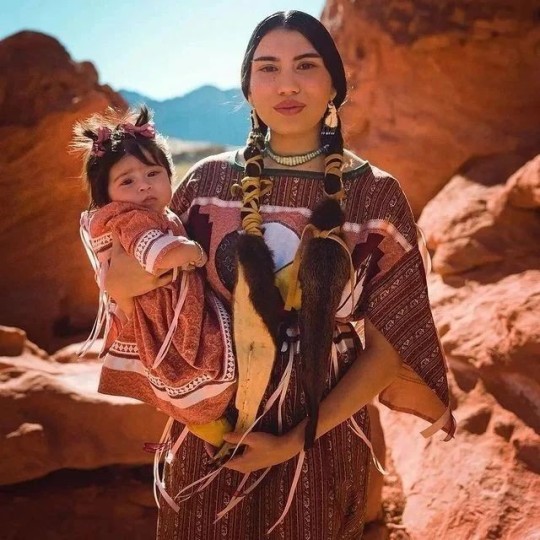
Traditions are a staple in any culture. These can be gestures or living life a certain way or to the way a certain person should look. Traditions are a personal detail to culture, they are what make it important. Tradition can dictate how one should keep their home, run their family, take care of their appearance, act in public and even determine relationship. Tradition can also be a double edged sword. Traditions can also be restrictive and allow a culture to push away a former member if they do not adhere to them, eg Traditional expectations of chastity led to thousands of Irish women being imprisoned at the Magdelene Laundries. Customs could be anything from how one treats another, to how they greet someone.
How important is tradition?
What are some rituals your culture undertakes?
What are some traditional values in your world? Does it effect daily life?
Are there any traditions that determine one's status?
Values and Opinions
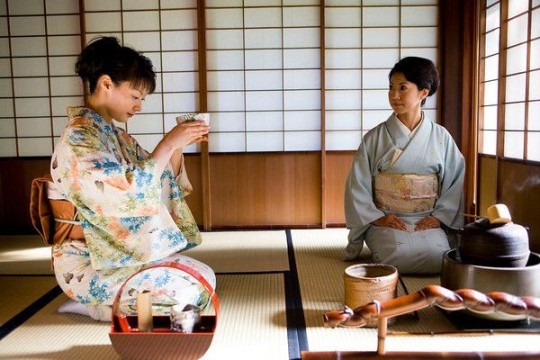
Values and Opinions are the bread and butter of any culture. This is the way your culture sees the world and how they approach different life hurdles. These may differ with other cultures and be considered odd to outsiders, what one culture may value another may not and what opinion another holds, one may not. There will be historical and traditional reasons to why these values and opinions are held. Cultures usually have a paragon to which they hold their members to, a list of characteristics that they expect one to if not adhere to then aspire to. The Yoruba people value honesty, hard work, courage and integrity. Here are some questions to consider?
How important are these ethics and core values? Could somebody be ostracised for not living up to them?
What are some morals that clash with other cultures?
What does your culture precieved to be right? Or wrong?
What are some opinions that are considered to be taboo in your culture? Why?
Dress Code

For many cultures, the way somebody dresses can be important. History and ethics can effect how one is meant to be dressed such as an expectation of chastity, can impose strict modesty. While other cultures, put more importance on details, the different sorts of clothes worn and when or what colour one might wear. The Palestinian people (من النهر إلى البحر ، قد يكونون أحرارا) denoted different family ties, marriage status and wealth by the embroidery and detailing on their thoub.
Are there traditional clothes for your world? Are they something somebody wears on a daily basis or just on occasion?
Are there any rules around what people can wear?
What would be considered formal dress? Casual dress?
What would happen if somebody wore the wrong clothes to an event?
Language

Language can also be ingrained as part of a Culture. It can be a specific way one speaks or a an entirely different language. For example, in the Southern States of America, one can engage in a sort of double talk, saying something that sounds sweet whilst delivering something pointed. Bless their heart. I have a post on creating your own language here.
Arts, Music and Craft

Many cultures are known for different styles of dance, their artwork and crafts. Art is a great part of culture, a way for people to express themselves and their culture in art form. Dance can be an integral part of culture, such as céilí dance in Ireland or the Polka in the Czech Republic. Handicrafts could also be important in culture, such as knitting in Scottish culture and Hebron glass in Palestine. Music is also close to culture, from traditional kinds of singing such as the White Voice in Ukraine and the playing of certain instruments such as the mvet.
Food and Diet
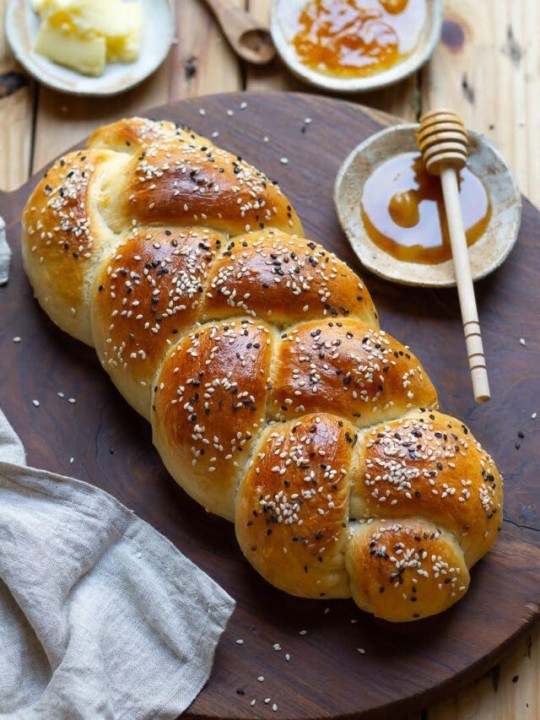
The way a culture prepares or intakes or treats certain foods are important to a culture. In some cultures, there is a diet yo adhere to, certain foods are completely banned. With Jewish culture, pork is prohibited along with fish such as sturgeon, along with shellfish and certain fowl. Meat must also be prepared in a certain way and animal byproducts such as dairy, must never be created or even eaten around this meat. This is known as kosher. The way one consumes food is also important to culture. In some cultures, only certain people may eat together. Some cultures place important on how food is eaten. In Nigerian culture, the oldest guests are served first usually the men before the women. In Japanese culture, one must say 'itadakimasu' (I recieve) before eating. Culture may also include fasting, periods of time one doesn't intake food for a specific reason.
What are some traditional dishes in your world?
What would be a basic diet for the common man?
What's considered a delicacy?
Is there a societal difference in diet? What are the factors that effect diet between classes?
Is there any influence from other cuisines? If not, why not? If so, to what extent?
What would a typical breakfast contain?
What meals are served during the day?
What's considered a comfort food or drink?
Are there any restrictions on who can eat what or when?
Are there any banned foods?
What stance does your world take on alcohol? Is it legal? Can anybody consume it?
Are there any dining customs? Are traditions?
Is there a difference in formal meals or casual meals? If so, what's involved?
Are there any gestures or actions unacceptable at the dinner table?
How are guests treated at meals? If they are given deference, how so?
8K notes
·
View notes
Text
How to prepare for the next semester
Before the semester starts:
Declutter any space you use for school. Backpacks, desks, laptops, tablets, phones, etc. Get rid of anything you don't need anymore and make sure anything you will need is accessible.
Buy any supplies you need for the next semester. New notebooks, textbooks, pens and pencils, folders, etc.
Put your new classes and extracurriculars, and any appointments you have into a planner or calendar.
Set goals and create routines for the upcoming semester.
During the first week:
Read your syllabus! I know a lot of people skim over it, but it contains a lot of important information.
Log the due dates of your assignments in a planner or calendar. If you want to go beyond, you can even log days you want assignments completed by, which is helpful if you have several things due on the same day.
Stick to your routine! The first week can set the tone for your semester, so this is your chance to give it a positive and productive tone.
Create class study groups and invite your classmates to them. I like using GroupMe for this, but there are several other groups.
Enjoy it! This is going to be one of the easiest weeks of the semester, so just have fun getting into the groove of things.
378 notes
·
View notes
Text
In my head, all my friends are lil forest critters and we all frolick and play among the twigs and moss together.
#forest#writing#worldbuilding#creative writing#just daydreaming#daydreaming#I’m a possum#my fiancé is a coyote#my best friend is a duck
0 notes
Text
The semester is ended, and I haven’t looked at my grades but just by glancing at my emails, I have certainly failed 2/5 of my classes.
No one is prob gonna see this, but I legit feel like a failure.
0 notes
Text
Writing Advice: Getting Words on a Page
With the 75k word count in November and 90k in August, I have been asked questions like how do I keep focus and what do I do when I get stuck. I am going to compile all the advice I have.
Over the last few years, I have posted 700k+ words of fan fiction and have been posting 3 to 6 chapters every week for the last ten months. This is not how to make your writing better. This is how to get words on a page.
This is not all my original ideas. This is just a collection of things that have worked for me.
I am not sure I am the person to tell you how to make your writing better, but if people want my thoughts on that. I can make that post too.

When inspiration strikes, write like wild.
If you have the time and you are bitten by the writing bug, keep writing anything while you are in peak form. You will thank yourself later when you feel like you can’t write everything.
I have done the extreme version of this where I have a month (four chapters) written ahead of almost everything on my post schedule (you don’t need this), but this was really nice after I brunt out after finishing out the 90k challenge I destroyed myself with in August.

Write in little pockets of time.
You don’t need to sit down and write for two hours. Write 100 words here and 500 there. It will all add up. When I was struggling at the end of the 75k, I would just open a doc every few hours and write half a page until I got distracted and tried again later.

Change your font.
If you are struggling to edit or even just find yourself drifting while writing, change your font. It helps trick your brain into paying attention. (I like doing a mono font like Courier when I need writing vibes. It looks typewriter-y)

Take a shower.
Not just for shower thoughts, being clean and fresh helps with focus

Get dressed.
I love being comfy, but something about getting dressed makes me feel like I am working and should finish my task. Extra points for it being fun. (Maybe cosplay a pirate or something.)

Move Locations.
Desk, kitchen table, bed, outside: changing location helps move you out of a brain rut.

Handwrite notes.
I take most of my notes on notion, but when I am struggling with my plot, I write out notes by hand, starting with what happened last and continuing from there, writing even things I know will happen. Then I transfer this to my digital notes so they are easier to move around in order, AND a lot of time, I add details when revising them to digital. Double power.

Always, always write down your thoughts and keep them.
Some of my most popular stories came from me rediscovering a 2 am thought that I wrote down six years ago. Keep a notepad next to the bed if you have to.

Change POV
If something is not working in a scene, maybe it is who you have reacting to it. Try switching POV. It helps you think of the scene from another perspective.

Watch a show in your genre.
I watch a lot of the silliest KDrama’s and get lots of romance ideas. Maybe I didn’t think of sending my character to a park or trapping them in a sky lift. Maybe I should add a stalker that sounds fun.

Take your bathroom breaks.
You should always drink lots of fluids and remember to take your bathroom breaks because the brief moment of walking away always gives me an idea.

Skim through the story and make notes on what HAS happened, not just what will happen.
This helps more with my style of having next to no plot outline. Need your next plot point and don’t know where to go? Remember that time they did x? Let’s build off that. This helps intertwine the plot without losing things.

Just read the story back.
You don’t always need to make notes, but sometimes just reading from the beginning can make you pick up on a detail that was unimportant at the time, and you may not even have meant to put in that could have a lot more meaning now. Then, you can call it clever foreshadowing.

Explain your problem or the scene you are struggling with out loud.
It doesn’t have to be to someone. It could be a glass of water. This is called ‘rubber ducking. It’s a programmer term (hello, that is my day job). Restructuring your problem in a way you have to articulate it most of the time makes the solution come to you.

Try focusing on the scenery.
If you can’t get a scene to work open with the weather or how the floor is creaking under step, give the world a new feeling. How does the person feel about the weather or the temperature of the room?

Can’t figure out what is wrong? Rewrite the chapter from scratch.
Open a new doc and rewrite the chapter from memory. I do this a lot in the beginning of a story that didn’t quite hit the way I wanted it to. I will start the chapter from memory and skim the old one to ensure I didn’t miss anything important.
Can’t do it from memory? Read a paragraph and write that from memory.

Take a left turn.
Sometimes, if you can’t go any further, go back a sentence, a paragraph, a scene, a chapter, and just make a different decision.
Turn left instead of right. Change how someone reacts to an argument. It opens a whole new lane to go down.

Excited for a scene that is in the future?
Write it!
You don’t have to use it word for word in the future. Sometimes, you can copy and paste it in, and sometimes, you can just rewrite it, and you lose none of those thoughts you originally had.
Writing it might remind you of something that needs to happen first to help you get there.

Have more than one story you are working on.
I don’t think you need to be working on four+ stories like I do, but having something to switch to when your brain really isn’t feeling your main is a great way to keep you writing. Call it productive procrastination.
This is the REAL reason I have so many stories uploading.
(ᵕ—ᴗ—)

Other Somewhat Related Advice
Context Switching
I work on multiple projects at a time, and I tend not to mix them up because they have a different vibe to me. It feels like stepping into each world.
If you are struggling with context switching between stories, I suggest finding a song or making a playlist that gives you that story’s ‘vibe’ and keeping a link to it in your writing folder or snagging a section of your story that captures the vibe you are going for and keeping it off to the side to reread when you need to switch.

Don’t edit the same day you write.
You’re not going to catch errors. Your brain is too familiar with what you wrote. Also, I recommend Grammarly or another grammar checker for all your missing comma and period needs. (Word, Docs, and any other text editor simply won't bully you enough.)

If you hate editing, don’t leave yourself with a painful amount of editing.
When people ask me how I edit my work, how many passes I take, etc, I tend to disappoint them. The short answer is one read-through (after using a grammar checker).
I learned a LONG time ago that as much as it would be nice to write a bunch of dialog and then tell yourself you will go back to add all the actions or write without quotes because it takes time, you will save yourself a lot of time and pain if you learn to write it correctly the first time and then editing won’t be as much of a chore.
I have been writing for years, and I am used to how I write and edit. If you are newer to writing, give it another pass or two, but try to shift some of that work to the writing process, not the editing process.

Make yourself an editing cheat sheet.
Make yourself a doc or a notion of words you notice you use too much or common words you misspell when writing.
I usually make one when I get back and do a post edit (when the story has been up for a while and I get back with fresh eyes and edit it).
Reading through your old work and find things that you don’t like or don’t want to do anymore is a great way to build this list and improve your writing.

Now go write.

Got any advice for me? Reblog and tell me.
119 notes
·
View notes
Text
I have decided to throw away all my wips, and have furiously started a new one
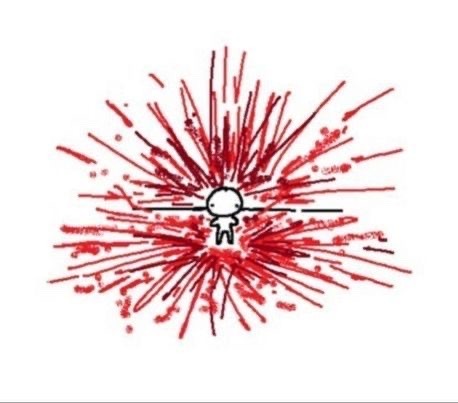
((pic from Pinterest))
#wip#wips#creative writing#writing#worldbuilding#writeblr#is feral writing a thing?#pantsing#planning
0 notes
Text
Outlining (part 1/2)
I used to be a first draft pantser. That’s cool if you are too, it worked really well for me in at least finishing a draft. What I’ve discovered recently though, is that not planning ahead of time really just adds on one more draft than needed, and I get stuck in split decision plot points that only led my story on a tangent. So six drafts down the line and I still have the ‘group kidnaps the little dog’ plot point because I fell in love with it in the beginning and can’t kill my darlings.
So I’m a planner now, and after I get through character, I tend to start on an outline.
Disclaimers are fun, let’s do one. Outline (or don’t!) however you want. I stick to the one I learned in screenwriting because I find it works for most stories (even novels!) and keeps me on track. I also probably plan a bit less than other people because I find I write better without having a million points per major plot point to hit. Don’t follow my example. Or do, if you find it works. (Also, I’d recommend reading last week’s character is plot post first as everything we’re about to talk about here starts with the work we did there!)
Here’s the main structure, then we’ll delve in:
Intro
Inciting Incident
First Act Turn
Fun and Games
Midpoint
Things get Worse
Second Act Turn
Crisis
Climax
Resolution
Not so hard huh? Basically every movie (especially Disney movies) follow this structure, so I’ll be using Moana as my main example. If you haven’t seen it, maybe go give it a watch it’s a great movie! (Plus this might make a bit more sense. SPOILERS AHEAD!)
Intro: This is the setup. It’ll introduce our protagonist, the rules of the world we’re in, set up genre, and contains a bit of foreshadowing for the story to come. How to do all of that? Our first conflict—something your character can solve or face to show their strengths, setting up who they are at the beginning, and what world they’re in.
In Moana, we foreshadow the story through baby-Moana meeting the ocean and receiving the heart, plus Grandma’s story that will serve as the inciting incident later. Then we get into a conflict: Moana wants to explore the ocean, her people (and especially her dad) don’t believe in leaving the island. Through this conflict we discover that while Moana is a great leader (fixes problems, headstrong--her strengths) her goal contradicts what’s expected of her, creates the conflict within herself and between her and her dad (she wants to be on the ocean.) This tells us the world she’s in: no one leaves her island, and she’s the daughter of the chief who is expected to uphold tradition. This is also where the motif of identity is initially introduced, which if you’re ahead of me and remember the story, is also how it ends.
Inciting Incident: If you’ve been taught the inciting incident is the first choice your protagonist makes, I beg you to throw that out. I personally find it much more effective if the inciting incident is something that happens to your character, because otherwise, why hadn’t they made that decision before? Why are we starting the story where we are? So the inciting incident is the thing that flips the world on its head, that forces the protagonist to act if they wish to remain in their comfy normal world. It’s best if it’s irreversible and has personal consequences. (Oh, and characters always want to stay in their comfy world, because change is hard and scary, and unless forced to, why would anything need to change?)
In Moana, she learns the darkness has spread to her island. It’s something that’s happening to her, has personal consequences (we already know how much Moana cares about her island and people based off the intro), and is difficult to reverse so Moana makes a decision (she’s forced to act.)
You might want to argue it’s her grandma dying (spoilers, sorry), but I consider that to be a raising of stakes, rather than the inciting incident. Moana was already going to act from when she discovered her island was dying, if the grandma had stayed alive she probably would have still left—but the grandma dying gives her extra motivation to make the leap. So it raises the stakes between the inciting incident and first act turn, but is not the inciting incident.
First Act Turn: This is now your first active choice made by the protagonist to pursue their goal (thus acting through their objective). It’s a direct response to the inciting incident, which means this is the character’s first attempt to solve whatever happened in the inciting incident. It’s important these two are connected, because your inciting incident was meant to jumpstart the story, and this is just the follow-up to that. The continuation of the story, now with the protagonist’s involvement.
Moana takes a boat and leaves the island. We get a sense that there’s a plausible chance of success. The important part in this early stage of your story is hope, no one wants to read through a story where they can’t possibly see your protagonist winning. (Whether they win/achieve their goal or not! They always have hope in the beginning.)
Fun and Games: This one is fun! (and games) because it’s really just bants. It’s your protagonist seemingly achieving what they want, their decision is paying off well so far—while there still should be conflict, we’re on a trajectory of success. The especially fun part (in a more evil sort of way) is that there’s a growing problem we’re not ready to address yet that will have consequences at the midpoint.
In Moana, she finds Maui (success!) gets left behind (conflict) but escapes the cave (success) and they start across the ocean, facing the coconut pirates (conflict) but overcoming (success). The growing problem here is that Maui clearly doesn’t really want to help her and has a secret self consciousness that’s holding him back “I’m nothing without my hook” (This is also why it’s important to explore each major character, because Maui’s disrupting characteristic--which is something we talked about last week--is what’s driving this conflict even though he’s not the main protagonist.)
Annd that’s where I’m going to end it today, right at the midpoint like it was destined. This post is already running pretty long and we’re only halfway through structure, so make sure to check back in tomorrow for part 2: midpoint to resolution!
Thanks for hanging in there! See you tomorrow.
61 notes
·
View notes
Text
Character is Plot
Character is plot. I mean that as, your main character’s arc is (literally) the main plot. If you think about arcs as something to put over or alongside an existing plot, they probably aren’t working very well. Or at least, you don’t have as much time or space as you need to fully explore both a good plot and a good arc. They are one of the same, so I’d even say throw whatever idea you have about plot out the window. They’re called arcs now. Congrats.
This also means if your characters aren’t working, the whole thing is going to fall apart. So I’m going to relay what was taught to me about solid character creation, and finding your arc!
There’s five critical things that go into character building: Goal, Objective, Unconscious Need, Disrupting Characteristic, and a Formative Event. They all work very closely together, so once you get one going, the others typically fall into place. (oh, and they sound complicated, but I promise they’re not.)
Goal and Objective go hand in hand, I’m sure you’re telling me right now that actually they’re the same thing. You’re right, they kind of are. The reason I split them up is so I make sure I always get not only a journey for my character to go on, but a meaning behind it. Action and intention. So:
Objective: the actionable (your character can work at it) objective of the story. What your character is physically doing throughout the story. Frodo taking the ring to Mordor is his Objective, Rapunzel going to see the lanterns in Tangled. Mulan protecting her dad by taking his place. Essentially, objective is what we’ve thought of as plot.
Goal: the intention behind the objective. Why is your character doing this? This is usually the emotional core of the story, where we tuck away arc and characterization. Rapunzel wants to see the lanterns to finally get out and start her life. Mulan wants to prove she’s worthy. Your character wants to make someone proud, or hurt someone who’s hurt them, or feel loved. This is the emotion behind their objective and cannot on its own be turned into an arc. One cannot ‘prove themselves worthy’ out of a void, that’s the goal, you also need an objective, ‘prove themselves worthy through taking their father’s place in the war’.
If you have these, great job! You’ve got a really solid foundation for your arc. What your character wants, and why they want it. However, if we just follow an objective and goal, your characters are going to feel very lifeless—so we need some additional depth:
Unconscious need: This will probably be the one you get stuck on the most. Good thing is, both of these words are hints on what to do here, Unconscious meaning your character doesn’t realize it, couldn’t put it into words, and Definitely doesn’t say it out loud. Need, is the start of how to answer this blank space. Your character needs to realize something they haven’t been aware of to achieve their goal. Or they need to realize a flaw in their goal. For example, a woman wants to run for president (objective) to make her mother proud (goal), but she needs to realize all her mother wants is to spend more time with her, and by using all her time to campaign for president, she’s actually splitting them further apart. Mulan needs to internalize that she doesn't have to be bigger than life to make her parents proud of her and bring them honor.
Your need is character specific, which means no one else should need the same thing. If your need can apply to multiple people, you probably didn’t get specific enough. Everyone needs to be loved, everyone needs to feel cared for. However, not everyone closed themselves off from relationships and needs to open up to people if they want to foster a connection. See the difference?
This step will directly influence how you write your climax, because it leads to a choice your character makes. They can either realize their need and adhere to it (Fine, I’ll take my name out of the campaign for president/call my parents/apologize to the people I’ve hurt) or continue with their objective despite it. Typically, characters that ignore their need after they realize it are considered to have tragic arcs. Getting your character to realize their need is the end of their positive arc, it’s what we’ve been working towards all along.
So it’s important. Don’t skip, yes?
Disrupting Characteristic: this one is fun. This step is adding a flaw to your character, specifically, it’s the flaw that’s holding them back from meeting their need. If there was nothing holding them back, wouldn’t they be satisfied already? So that’s the easiest place to start with this one, what they need, and what could possibly be holding them back from it. If they need to see their father as he truly is, maybe their disrupting characteristic is that they’re optimistic to a fault. This characteristic could be a thing the character does (idolizes their father, acts fiercely independent, etc.) or a belief they have about themselves or the world (self conscious, believes humans are inherently cruel, etc.) It’s the epitome of their internal conflict, they need something, but some ingrained part of them is keeping them from it. Evil? Absolutely. But us writers tend to be.
The disrupting characteristic is the internal arc your character goes through, they are working and being challenged throughout the story to overcome this characteristic. So in another example, a romantic character may realize their parents led them to believe they were undesirable (unconscious need), and that it has no merit, so they gain a new confidence and overcome their self consciousness (disrupting characteristic) to ask their ideal partner out.
You see what I mean why I say all these steps work together. Need and disrupting characteristic and goal are so intertwined that it can be difficult sometimes to voice them apart from each other, but they also can’t carry each other. A solid need and disrupting characteristic isn’t going to do much if you don’t have a very convincing goal. Make sure you can put them into words (preferably write them down) and voice them all as separate things from each other, and how they work together. If you can do that, you’re set.
Last but not least is Formative Event: this is essentially your beginnings of backstory. The formative event Is the (usually) singular event in a character’s past that made them to be who they are today—importantly, that developed their need and disrupting characteristic. Your character showed up to school in their new dress and was bullied, a mom left, or a dog died. The reason they are the way that they are. From this, you can build up the rest of their backstory. Moana is chosen by the ocean, her parents try to keep her away from the ocean, she grows up unsure about the idea of being the next chief. If you’re struggling with backstory, start here, build around it.
(Oh, and you don’t necessarily have to mention the formative event in your story, in fact most screenplays don’t. As long as you know it, you’re set.)
Speaking of backstory, it’s our invisible sixth step (or… first, really) because all of these things you come to know about your character is developed out of backstory (which makes it a pretty good place to start). It makes sense, really, if these steps are who they are, they’ve become that way because of where they’ve come from. I tend to start with family when I’m trying to discover backstory, given family is a large part of who we are—then education, then home/community, friends, interests, etc. But there’s no real ‘perfect’ way to do it. Just write, let your mind wander, add and take away whatever you want, and meet your new character for the first time.
So how did all of that give you your plot? It’s through how they change! We’ve created someone who wants something, and needs something else, and unless we take them on a journey so they can figure it out, we’ll never have a story. So that journey to help them realize their need? That’s your plot.
If you’re struggling with how to help them change, consider putting your arc into a logline (something screenwriters do, but I find it really helpful even in novel writing). A logline is essentially your plot (character arc) summed up in a sentence or two. It goes like this: A but B so C
A: Disrupting characteristic
but
B: Conflict (goal/objective meets antagonist)
so
C: Changed character
Loglines are a tool for writing (at least in the way we’re using them), so make sure you have your full story—ending, character change, conflict, anything you’d find helpful to keep you on track.
I’ll often write a logline for each major character I have. Here’s an older one about a character I’ll call “Mark”:
A: Obsessive
B: His death has been predicted
C: Opens up to the others, recognizes he only has a little bit of time left, and should spend it with the people he loves (that’s also his need!)
Logline: Private Mark Jackson obsesses over an unproven myth that promises the escape of his small life, but when his untimely death is foretold and every day drives him closer to his fate, he opens up to his friends to be content in a slightly different life than he had imagined for himself.
Loglines are great because they have it all!
Private (additional characteristic) Mark Jackson obsesses (disrupting characteristic) over an unproven myth (objective) that promises the escape of his small life (goal), but when his untimely death is foretold and every day drives him closer to his fate (conflict), he opens up to his friends (need) to be content in a slightly different life than he had imagined for himself (change).
You see how the entire story is right there in that sentence? This is a great place to start before we move onto officially outlining next week, so save your work, we’ll come back to it!
To get a good handle on all this, I’d recommend watching your favourite movies or reading your favourite book and filling out as many steps as you can, then creating loglines for each major character. Disney movies especially stick to this structure (thus all the examples) and typically have very clear arcs, but anything works.
Good luck!
449 notes
·
View notes
